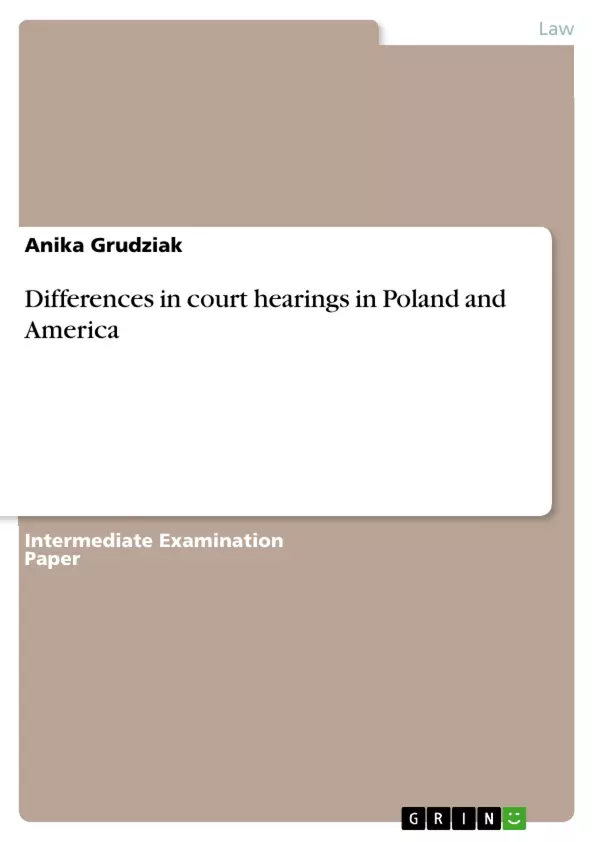This paper is going to demonstrate the differences between Polish and American judicial hearings. It points out that the most visible differences, such as: codification of continental law visible primarily in the practice of law by lawyers and the differences on the basis of procedural law.
In the first chapter, there is described Polish and the American legal system. Each set of legal systems was formed in the different conditions under the influence of different factors. It was a natural process. Each of the systems is optimal for the social, economic and historical environment in which it operates. Then, the advantages and disadvantages of both models (the common law, civil law) are pointed out. The second chapter describes the case-law of Polish and the US courts. This section describes in detail the case of an American O. J. Simpson, accused of a double murder. In the third chapter, there is indicated a judicial practice in Polish and American judicial system. Example of American jurisprudence is shown by the case “Roe versus Wade". This chapter also includes the differences in the terminology used in legal language and cultural differences in the field of customs and legal communication styles.
Inhaltsverzeichnis (Table of Contents)
- Introduction
- Lawmaking systems
- The Polish legal system - civil law
- The American legal system - the common law
- Advantages and disadvantages of the two models (the common law, civil law)
- American and Polish jurisprudence
- Jurisdiction of the US courts
- Jurisdiction of the Polish courts
- Differences in Polish and American court hearings
- The judicial practices of Polish and American system
- Legal language - differences in terminology
- Intercultural differences in terms of styles of communication law
Zielsetzung und Themenschwerpunkte (Objectives and Key Themes)
This paper aims to illustrate the differences between the judicial hearings in Poland and the United States, focusing on the distinctions between the civil and common law systems. It explores the unique characteristics of each system, highlighting the key differences in legal practices, terminology, and communication styles.
- Comparison of the Polish and American legal systems, including civil law and common law
- Examination of the jurisdiction and case-law practices in both countries
- Analysis of differences in legal language and terminology used in court proceedings
- Exploration of intercultural differences in legal communication styles
- Highlighting the influence of historical and cultural factors on legal systems
Zusammenfassung der Kapitel (Chapter Summaries)
The first chapter examines the Polish and American legal systems, highlighting the historical and cultural influences that shaped their respective development. It contrasts the civil law system of Poland with the common law system of the United States, outlining the key differences in legal principles and practices. This chapter also explores the advantages and disadvantages of both models.
The second chapter delves into the jurisprudence of the Polish and American courts, providing a detailed analysis of the O. J. Simpson case as an example of American case-law. This section focuses on the jurisdiction of the US courts and how they handle complex legal issues.
The third chapter examines the differences in judicial practices between Poland and the United States. It analyzes the specific legal language used in each country, highlighting the key differences in terminology. This chapter also explores the cultural differences in communication styles within the legal field.
Schlüsselwörter (Keywords)
The main keywords and focus topics of this paper include: civil law, common law, Polish legal system, American legal system, court hearings, legal practices, legal language, terminology, communication styles, jurisprudence, case-law, intercultural differences, legal systems, historical influences, cultural factors.
- Quote paper
- Anika Grudziak (Author), 2023, Differences in court hearings in Poland and America, Munich, GRIN Verlag, https://www.hausarbeiten.de/document/1330397


